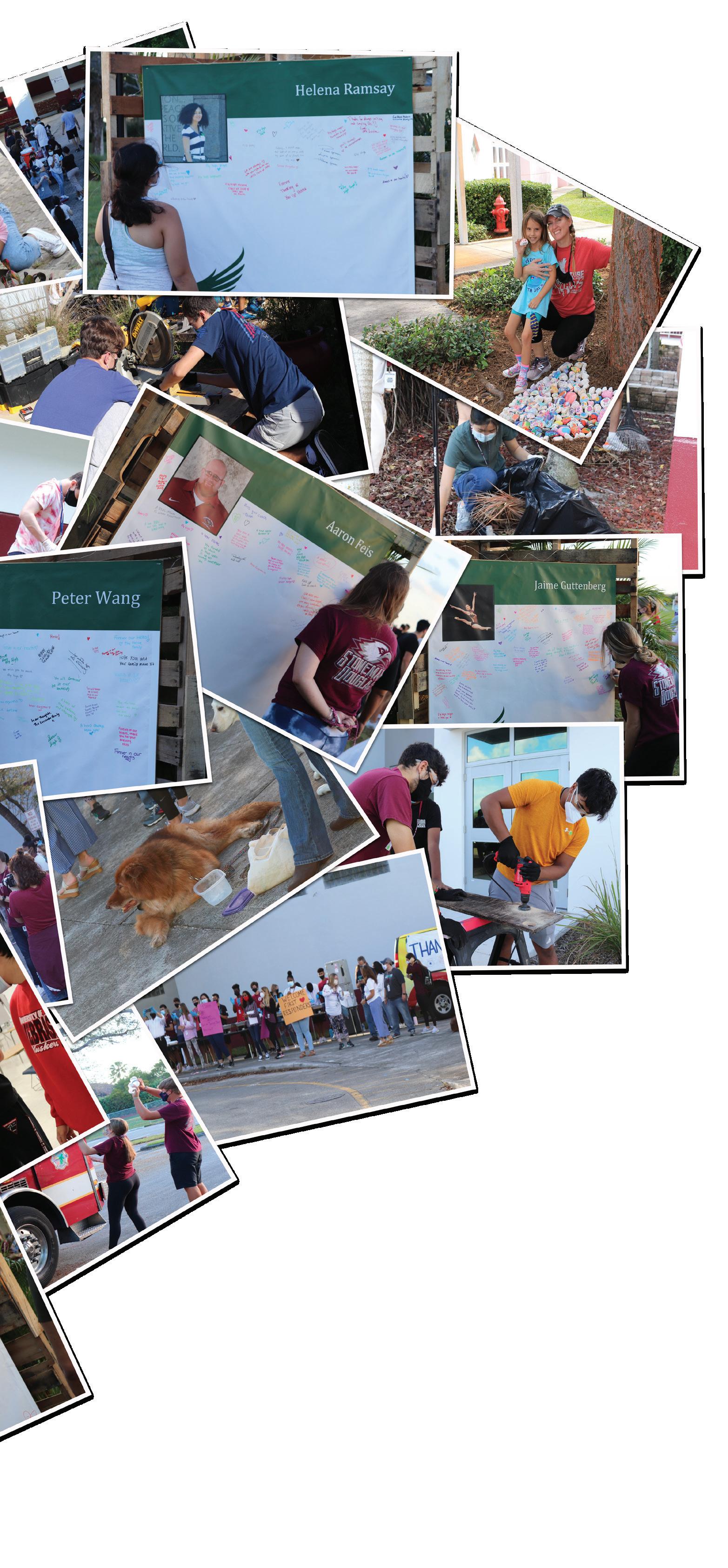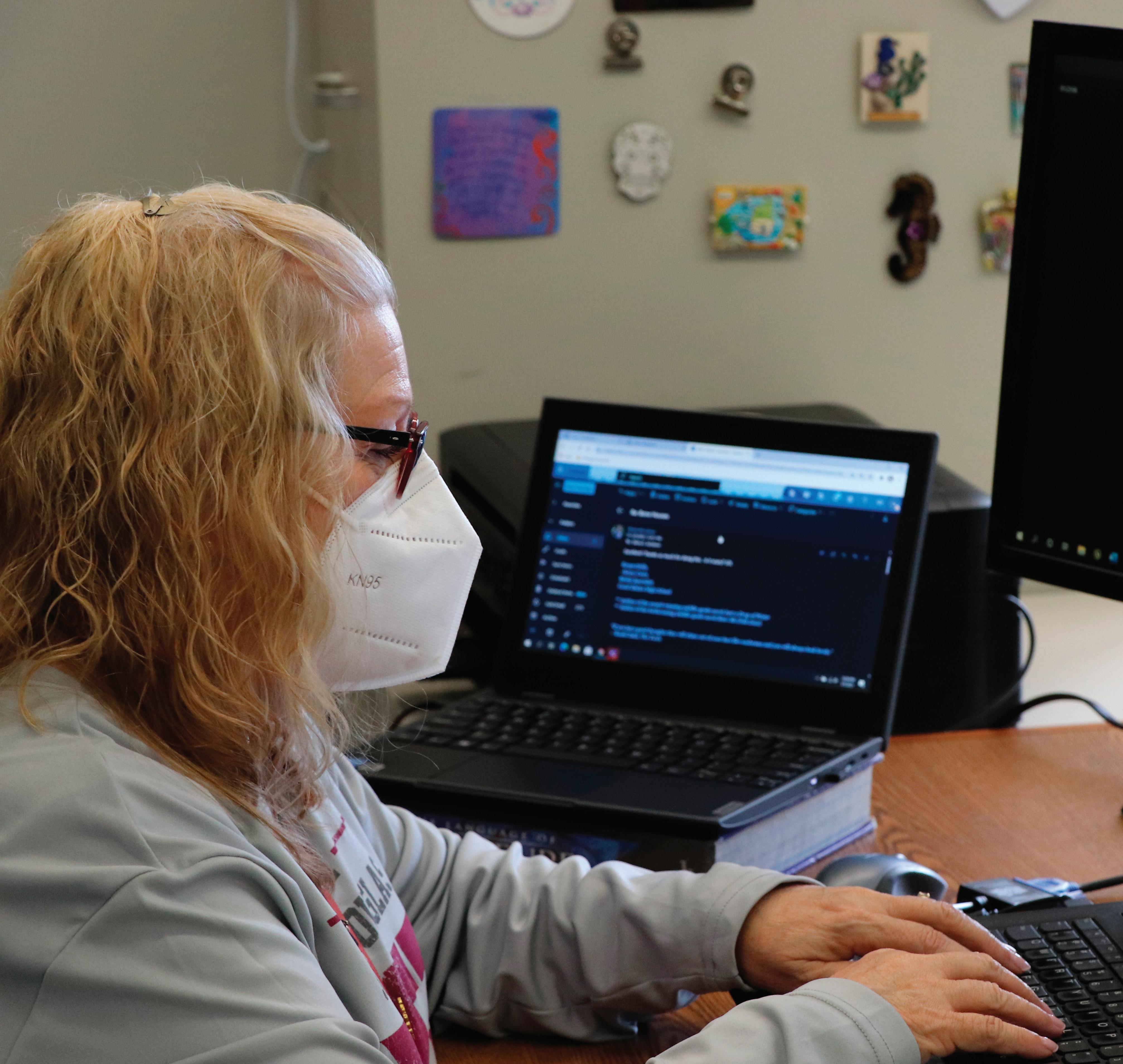
6 minute read
Healing hearts
Hearts
Mental health and healing of seniors still a work in progress
Advertisement

As our Marjory Stoneman Douglas High School community advances past the third commemoration of the deadly Feb. 14, 2018 shooting, those of us who were merely freshmen at the time of the event, now make up the senior class of 2021, continue to struggle with the lasting effects of that day. A vast majority of our class now deal with the consequential issues that stem from post-traumatic stress disorder and present themselves through anxiety, depression or other disorders, all while attempting to carry out what is expected of us as “normal” high school students. The social and academic aspects of school already put an immense amount of pressure on students, but having to juggle their mental health on top of that, led many students to turn to unhealthy coping mechanisms such as alcohol and drugs. According to the International Society for Traumatic Stress Studies, teenagers that suffer from PTSD are four times more likely to become dependent on alcohol, six times more likely to abuse marijuana and nine times more likely to experiment with hard drugs. However, the burden of this endeavor tends to be forgotten by others, as many of us have also been met with insensitivity regarding the progress of our emotional healing. In the days leading up to the anniversary, the Instagram account @healingfromPTSD posted a collection of phrases to avoid saying to those who suffer from PTSD, which was then altered to fit the narrative of our school’s trauma by @ptsd.slp, titled, “What not to say to a Parkland survivor.” Included were comments such as, “It happened so long ago. Shouldn’t you be over it by now?”, “It’s all in your head,” or “Just stay positive.” The post was shared on the stories of numerous MSD seniors, confirming that these phrases were simply a few of the tone-deaf statements we have heard in conversations concerning our mental health. Although it has been three years, it is extremely invalidating to be told that such a traumatic event should no longer have any effect on our well-being. Research from the American Addiction Centers Resource shows each individual embarks on a different healing process which can manifest itself in various manners. Trauma can linger for years after the actual event. In fact, trauma-related changes in the brain can drastically alter one’s concept of time. Whereas a traumatic event may have occurred years ago, some victims it may feel as if it were both yesterday and a lifetime ago at the same time. Even so, it is not just one horrific day that we continue to recover from. Aside from our sophomore year, our class has yet to experience a school year in its entirety. Merely three quarters into our freshman year, the expectation of enjoying our adolescence and the promise of high school as the best time of one’s youth were broken. Sophomore year we were overwhelmed with media attention as well as shortstop solutions meant to provide a false sense of security after the fact. Increased security, clear backpacks and talk of metal detectors made it feel as if what happened was an oversight on the end of the students. Last year, we persevered through the most stressful academic year but were rewarded with online schooling for the remainder of the fourth quarter. Now, we’ve entered our final year of high school virtually, without an inkling of knowledge as to how we are meant to say goodbye. Now as seniors, we are currently in a conflicted state of isolation as the only remaining grade that directly experienced the terror and consequently the nightmares, yet acceptance as we are surrounded by a community that has attempted to come together to cater to our emotional needs. For us, it feels like we have outgrown the utter concept of high school; simply carrying out a meaningless routine of homework and AP tests when we have stood right before death. But at the exact same time, it is as if we can take a breath knowing that we do not have to explain ourselves to our fellow peers or that the same event will never occur here again.
As we steadily move towards a future that may guarantee us a new beginning, it does not necessarily mean that we are cured or no longer feel these effects. Healing does not follow a timeline nor does it have a deadline. We may rid ourselves of the visual reminder, yet we will always take the experience with us no matter where we are. Editorial by Ashley Ferrer; photos by Fenthon Aristhomene, Rayne Welser, Haley Jackson and Theron Piccininni


Day of Service and Love Feb. 14, 2021
One year later

MSD and the U.S. continue to navigate life with COVID-19 a year after it’s emergence into the country
On March 13, 2020, Broward County Public Schools issued a mandate which stated that all BCPS schools would be closed, effective immediately, due to the spreading COVID-19 pandemic. Now, almost one year later, the majority of students are still learning from their computers at home and vaccines have just hit the market. Counting Cases
Fourteen months after its initial emergence into the United States, the COVID-19 virus has spread across all 50 states and infected 28,646,679 people nationwide. According to the CDC’s COVID-19 Data Tracker, over 519,064 individuals in the U.S. alone have died due to the virus or complications of its infection.
Zooming in to a more statewide view, Florida has been the breeding ground for the virus since the 2020 spring break, with college students and vacationers flocking to the beaches and club scenes across the state. The Florida Coronavirus Community Action Dashboard reports that since March 1, 2020, there have been over 1.9 million cases reported statewide, along with 31,521 deaths caused by COVID-19.
Across the state, many districts and counties have established their own versions of a tracking system. The BCPS Coronavirus Dashboard was created on Oct. 9, 2020, when campuses were officially opened to students. Five months later, BCPS reports a total of 3,774 cases in the school district alone. According to the data, BCPS students are receiving positive tests about 200 more times than those of teachers.
Since its reopening date of Oct. 9, 2020, Marjory Stoneman Douglas High School has seen a total of 42 positive cases of COVID-19 from both students and teachers. Out of those cases, 18 were reported within the last 30 days.
“There are 3,200 students who are enrolled at MSD,” Assistant Principal Daniel Lechtman said. “Currently, only about 250 students are on campus.”
Out of 241 schools in the Broward County area, MSD falls within the top 10 schools with the highest reported cases. Cypress Bay High School in Weston holds the spot of most cases with 55 students and 19 teachers testing positive for a grand total of 74 positive COVID-19 cases. Continuing Education
From Aug. 19 to Oct. 8, 2020, BCPS stuck with the remote learning model of education called e-Learning Phase 1. During this time period only administrators, a few teachers and other select staff were on-campus at Broward County schools.
Students were not the only faces welcomed back at the start of Phase 2, a few teachers also made their grand entrance. However, 1,700 teachers still remained at home with an accommodation due to underlying health conditions.
But with students and teachers alike returning to campus, there was a looming concern amongst the community. How to protect everyone from COVID-19?
MSD took many precautions to keep its teachers and students healthy and safe while they continued to learn on-campus. The school was given a COVID-19





